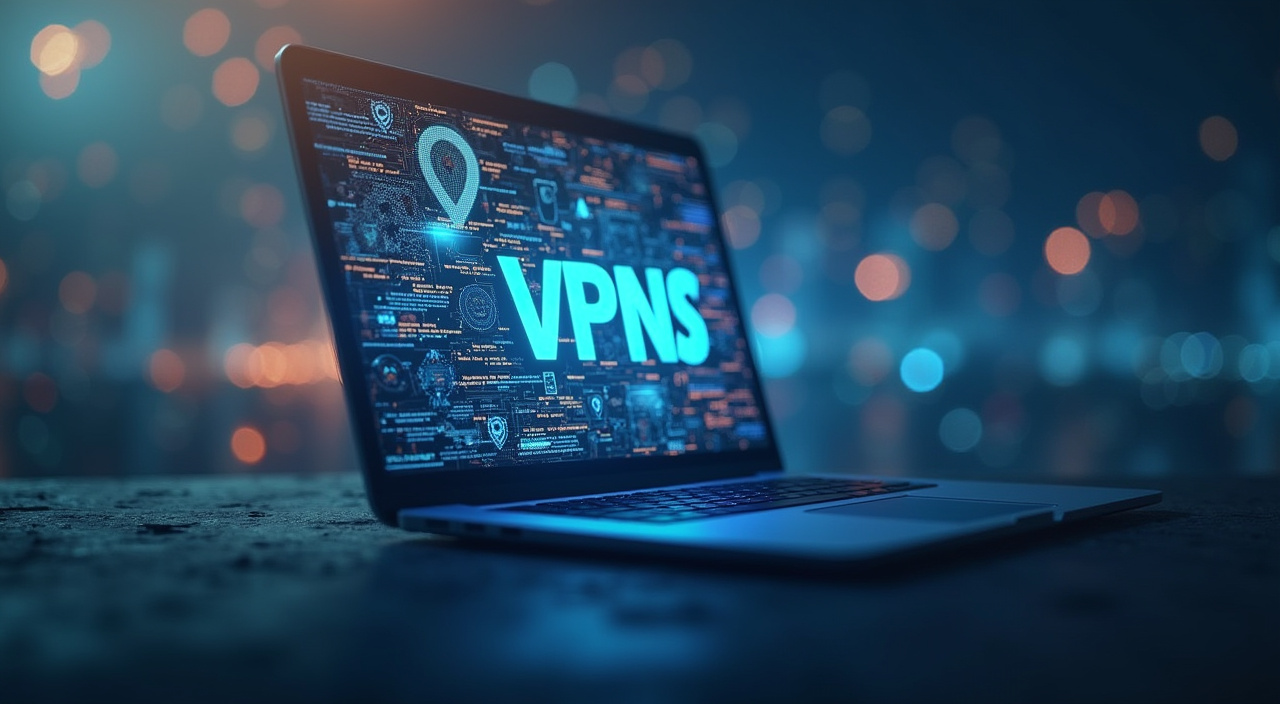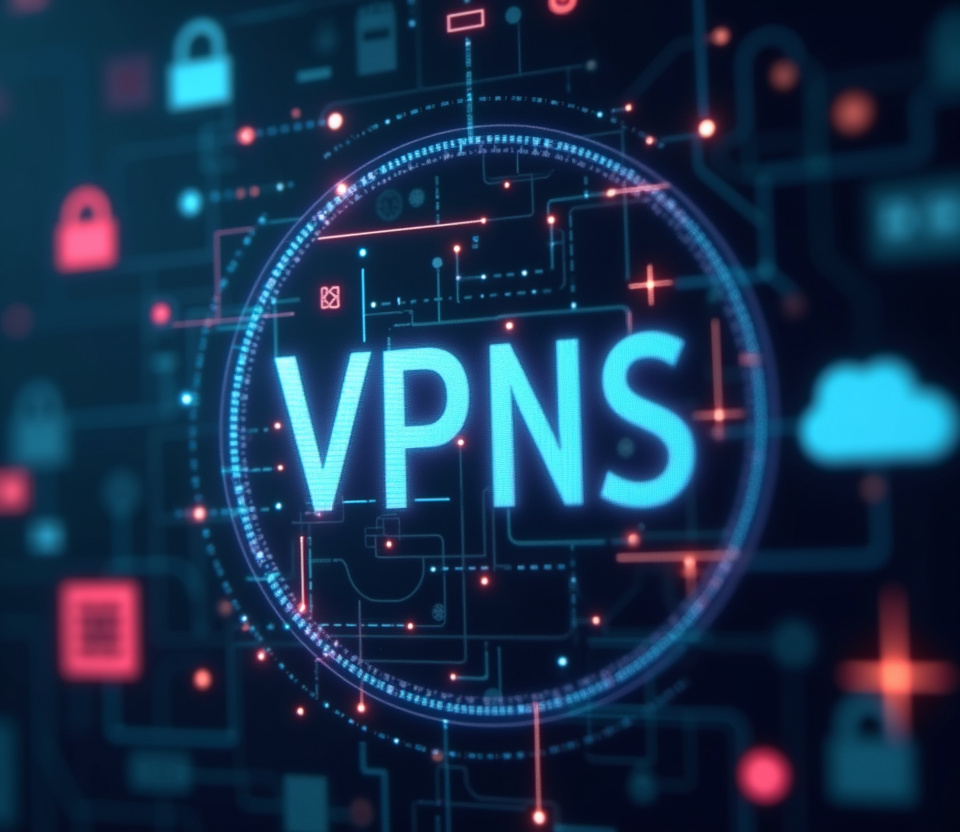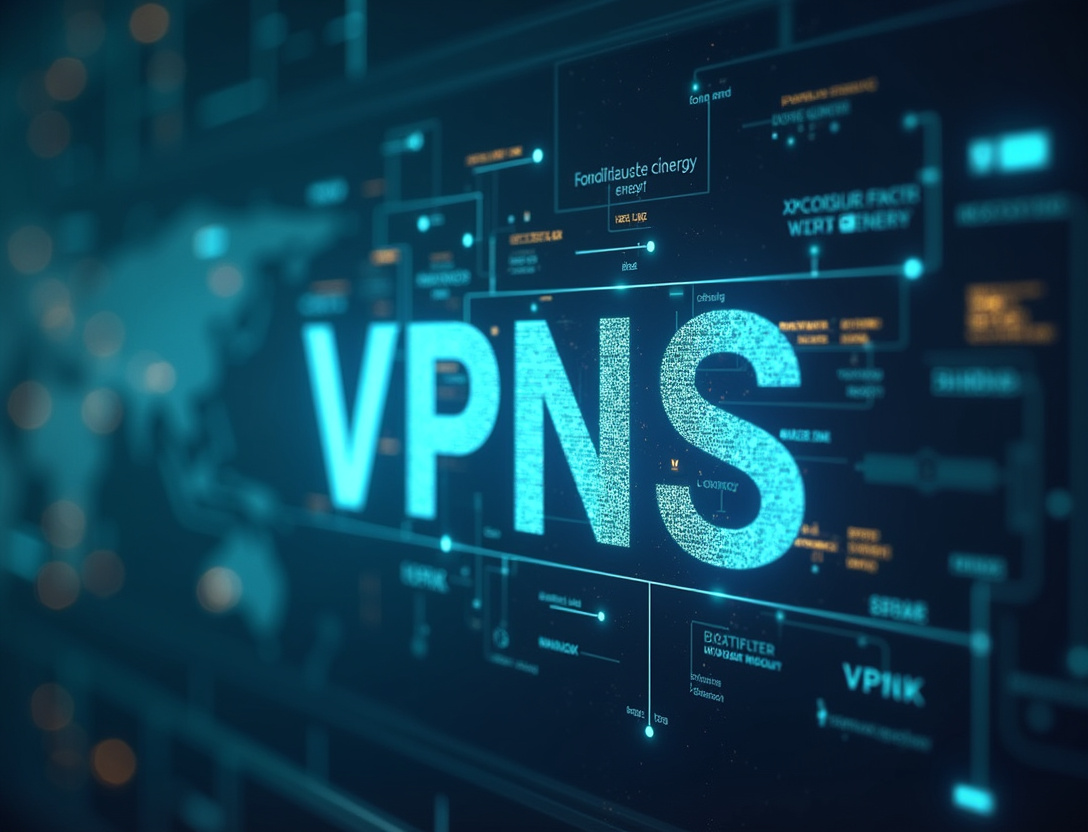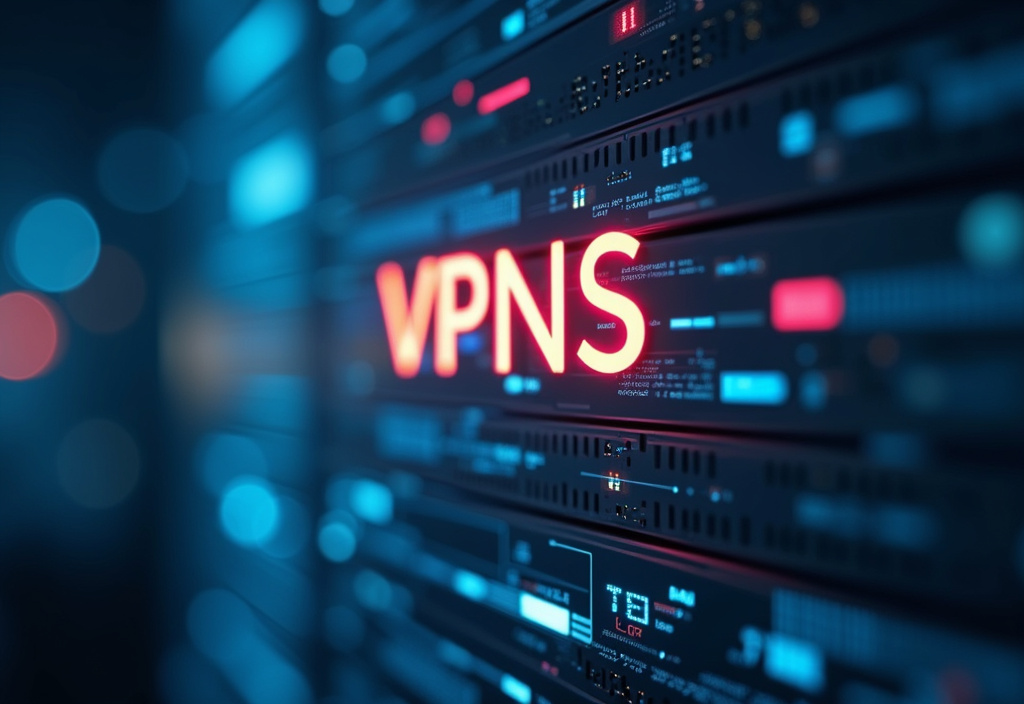VPNs for Renewable Infrastructure: Safeguarding Operation Data
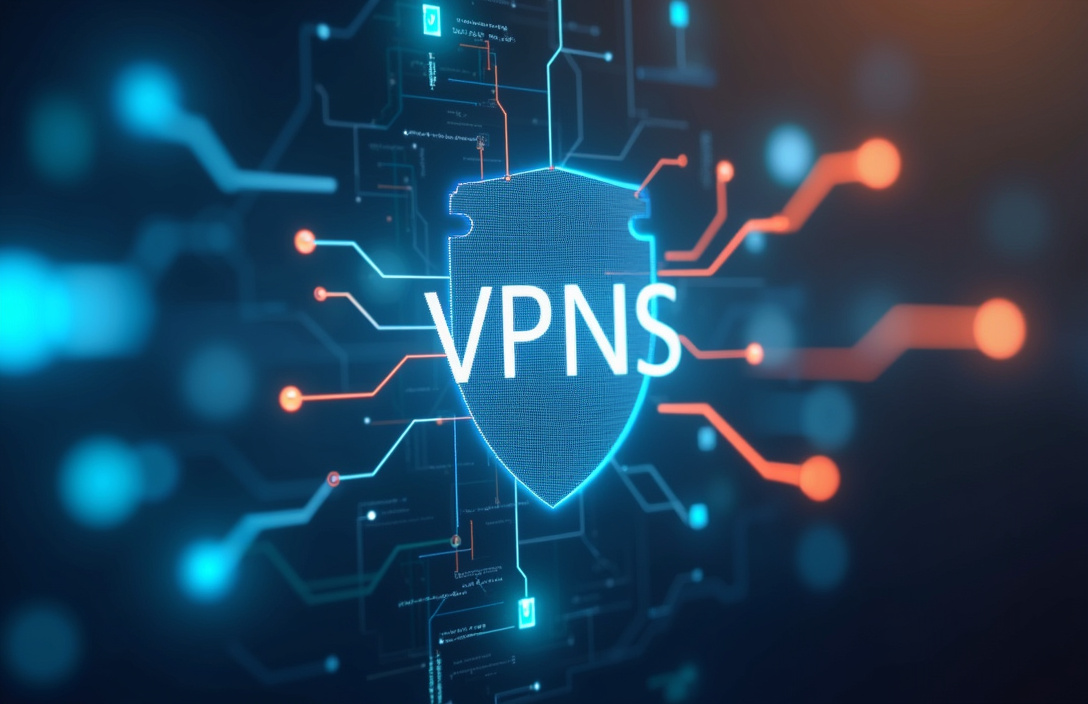
Table of Contents
Introduction to VPNs in Renewable Energy
The digital transformation of the renewable energy sector has ushered in an era of unprecedented efficiency and data-driven decision-making. Wind farms, solar arrays, hydroelectric plants, and geothermal facilities are now intricately connected networks, relying on real-time data for optimal performance, predictive maintenance, and grid integration. However, this increased connectivity also introduces significant cybersecurity vulnerabilities.
The vast amounts of operational data generated by these facilities, encompassing everything from turbine performance metrics to grid stability parameters, are prime targets for malicious actors seeking to disrupt operations, steal valuable information, or even compromise critical infrastructure. A single successful cyberattack could have devastating consequences, leading to power outages, equipment damage, financial losses, and reputational harm. Therefore, safeguarding this data is no longer just a best practice; it's a fundamental necessity for ensuring the reliability, resilience, and sustainability of renewable energy infrastructure.
This article delves into the crucial role of Virtual Private Networks (VPNs) in protecting operational data for renewable infrastructure projects. A renewable infrastructure VPN provides a secure, encrypted connection between remote sites, control centers, and data storage facilities, shielding sensitive data from unauthorized access and tampering. It acts as a virtual fortress, defending against a wide range of cyber threats, including eavesdropping, man-in-the-middle attacks, and data breaches.
By implementing strong authentication protocols, data encryption algorithms, and access control policies, a dedicated VPN can significantly enhance the operation security of renewable energy facilities and maintain data integrity. The unique challenges posed by the distributed nature of renewable energy infrastructure necessitate a tailored approach to VPN deployment. Unlike traditional centralized networks, renewable energy projects often span vast geographical areas, connecting remote sites with limited network infrastructure and varying levels of security.
Wind farms, for instance, may consist of hundreds of turbines scattered across remote landscapes, each generating data that needs to be securely transmitted to a central control center. Solar arrays may be located in isolated desert environments, relying on wireless communication links that are vulnerable to interception. Hydroelectric plants may be remotely monitored and controlled, requiring secure access from off-site engineers and operators.
A robust renewable infrastructure VPN solution must be capable of addressing these challenges, providing secure and reliable connectivity across diverse network environments. Beyond securing data in transit, a VPN can also play a vital role in protecting sensitive information stored on local devices and servers. Many renewable energy facilities rely on Supervisory Control and Data Acquisition (SCADA) systems to monitor and control critical equipment.
These systems, often designed with limited security features, can be easily exploited if directly exposed to the internet. A VPN can provide a secure barrier, isolating SCADA systems from external threats and limiting the potential damage from any successful attacks. Furthermore, a VPN can be used to enforce access control policies, ensuring that only authorized personnel can access sensitive data and control systems.
By implementing strong authentication and authorization mechanisms, a VPN can prevent unauthorized access and data manipulation, protecting the integrity of critical operational information. In essence, a well-designed and properly implemented VPN acts as a cornerstone of operation security for renewable infrastructure, helping to maintain data integrity, enhance resilience, and ensure the continued success of the renewable energy sector. It is an essential investment in a secure and sustainable energy future.
Prioritizing VPN implementation as a foundational security measure is vital for fostering confidence and trust in the digital systems underpinning renewable energy production.
Enhancing Project Data Protection with VPNs
The selection and implementation of a renewable infrastructure VPN solution require careful consideration of several key factors. First and foremost, the VPN must support strong security protocols. Common protocols include IPsec (Internet Protocol Security), OpenVPN, and WireGuard, each offering varying levels of security and performance.
IPsec is a widely used suite of protocols that provides robust encryption and authentication, making it a solid choice for securing VPN tunnels. Its strength lies in its ability to operate at the network layer (Layer 3), providing security for all IP traffic. This makes it transparent to applications, requiring no modifications to existing software.
However, IPsec can be complex to configure and manage, particularly in large, distributed environments. OpenVPN is an open-source solution known for its flexibility and strong security features, allowing for customized configurations to meet specific needs. It supports a wide range of encryption algorithms and authentication methods, providing a high degree of security and adaptability.
OpenVPN can operate over both TCP and UDP, offering flexibility in network environments. However, its performance can be impacted by TCP overhead, especially in high-latency networks. WireGuard is a more recent protocol gaining popularity for its speed and efficiency, offering a streamlined approach to VPN encryption.
It uses modern cryptography algorithms and a simplified design, resulting in significantly improved performance compared to older protocols. WireGuard is also easier to configure and manage than IPsec, making it an attractive option for smaller deployments. However, it is a relatively new protocol, and its long-term security track record is still being established.
The selection of the appropriate protocol will depend on the specific security requirements, performance needs, and compatibility considerations of the renewable infrastructure deployment. Another critical aspect is the authentication mechanism used to verify the identity of users and devices attempting to connect to the VPN. Strong authentication methods such as multi-factor authentication (MFA) should be implemented to prevent unauthorized access, even if a password is compromised.
MFA adds an extra layer of security by requiring users to provide multiple forms of identification, such as a password and a one-time code generated by a mobile app. This makes it significantly more difficult for attackers to gain access to the VPN, even if they have obtained valid credentials. Other authentication methods include certificate-based authentication, which uses digital certificates to verify the identity of users and devices, and biometric authentication, which uses unique biological characteristics such as fingerprints or facial recognition.
Beyond protocol selection and authentication, the VPN architecture should be designed to provide granular access control. This means that different users or groups should have different levels of access to the renewable infrastructure network, based on their roles and responsibilities. For example, a technician responsible for maintaining wind turbines should only have access to the systems required for turbine monitoring and control, not to other sensitive areas of the network.
Granular access control helps to limit the potential impact of a security breach by preventing attackers from gaining access to critical systems if they compromise a less privileged account. Furthermore, the VPN solution should include robust logging and monitoring capabilities to detect and respond to potential security incidents. Logs should be regularly reviewed for suspicious activity, such as unauthorized access attempts, unusual traffic patterns, or malware infections.
Real-time monitoring can also provide early warning of potential problems, allowing security teams to take proactive steps to mitigate the risk. Implementing a Security Information and Event Management (SIEM) system can further enhance threat detection and incident response capabilities by aggregating and analyzing security data from multiple sources. The physical security of the VPN infrastructure itself must also be addressed, particularly for VPN servers located in remote locations.
These servers should be housed in secure environments with restricted access, and protected against physical threats such as theft, vandalism, or environmental hazards. Redundant power supplies and network connections should also be implemented to ensure high availability in the event of a power outage or network failure. Implementing intrusion detection and prevention systems (IDS/IPS) within the VPN infrastructure is crucial.
These systems continuously monitor network traffic for malicious activity, such as malware, intrusions, and denial-of-service attacks, allowing for prompt response and mitigation.
VPN Protocols and Their Role in Renewable Energy Security
Data integrity is paramount in renewable energy operations, touching everything from grid stability calculations to regulatory compliance reporting. The ability to trust the data flowing through renewable infrastructure systems is non-negotiable. A compromised data stream could lead to inaccurate energy production forecasts, inefficient grid management, and even safety hazards.
Implementing a renewable infrastructure VPN is a critical step in ensuring data integrity, but it's not the only one. The VPN provides a secure tunnel for data transmission, protecting it from eavesdropping and tampering, but additional measures are needed to ensure data remains accurate and unaltered throughout its lifecycle. One important measure is to implement data validation and integrity checks.
These checks can be performed at various points in the data flow, from the sensors at the renewable energy facility to the control systems at the grid operator. Data validation checks ensure that the data falls within acceptable ranges and that it is consistent with other data sources. For example, the temperature readings from a solar panel should fall within a certain range based on the ambient temperature and solar irradiance.
If the temperature reading is outside of this range, it may indicate a sensor malfunction or a data manipulation attempt. Integrity checks, such as checksums and hash functions, can be used to verify that the data has not been altered during transmission or storage. A checksum is a simple calculation that produces a single value based on the contents of the data.
If the data is altered, the checksum will change, indicating that the data is no longer integral. A hash function is a more sophisticated calculation that produces a unique fingerprint of the data. Hash functions are more resistant to tampering than checksums, making them a preferred choice for critical data.
Another important aspect of ensuring data integrity is to implement proper data storage and backup procedures. Data should be stored in a secure and reliable manner, with regular backups to protect against data loss or corruption. Backups should be stored in a separate location from the primary data, to protect against physical disasters such as fire or flood.
Version control systems can also be used to track changes to data over time, allowing for easy recovery of previous versions. Furthermore, access control policies should be enforced to restrict access to sensitive data. Only authorized personnel should be allowed to access, modify, or delete data.
Access control policies should be regularly reviewed and updated to reflect changes in roles and responsibilities. Data encryption can also be used to protect data at rest, ensuring that it cannot be read by unauthorized individuals even if they gain access to the storage media. Encryption algorithms should be carefully chosen to ensure that they are strong enough to protect against modern attacks.
Regular security audits should be conducted to identify and remediate any vulnerabilities in the data integrity infrastructure. Security audits should be performed by qualified professionals who have expertise in data security and integrity. Audit findings should be documented and tracked, and corrective actions should be taken to address any identified vulnerabilities.
In addition to technical measures, it is also important to implement appropriate policies and procedures to ensure data integrity. These policies should define the roles and responsibilities of personnel involved in data management, and they should outline the procedures for data validation, integrity checking, storage, backup, and access control. Regular training should be provided to personnel to ensure that they are aware of the data integrity policies and procedures.
Finally, it is important to continuously monitor and improve the data integrity infrastructure. This involves tracking key metrics, such as data error rates, backup success rates, and security incident response times. By monitoring these metrics, organizations can identify areas where improvements are needed and can proactively address any potential problems.
Maintaining a strong culture of data integrity is essential for ensuring the reliability, resilience, and sustainability of renewable energy infrastructure. The collective effort of implementing robust technical controls, enforcing sound policies, and fostering a commitment to data accuracy will ultimately safeguard the vital information powering the transition to a cleaner, more sustainable energy future. Proactive data governance and continuous monitoring are critical for identifying and mitigating potential vulnerabilities before they can be exploited, ensuring the ongoing integrity of operation security and related data streams.
VPNs for Services: Securing Subscription-Based Platforms
Security protocols form the technical backbone of any robust renewable infrastructure VPN solution, providing the essential encryption, authentication, and integrity mechanisms needed to protect sensitive data. Understanding the strengths and weaknesses of various security protocols is crucial for making informed decisions about VPN implementation. As previously mentioned, IPsec, OpenVPN, and WireGuard are among the most commonly used protocols, each offering distinct advantages and disadvantages.
However, the selection of a protocol is only the first step. Proper configuration and management are equally important for ensuring the effectiveness of the chosen protocol. Strong encryption algorithms should be selected to protect data from eavesdropping.
AES (Advanced Encryption Standard) is widely considered to be a robust and secure encryption algorithm, and it is supported by most VPN protocols. The key size used for encryption should also be carefully chosen. A larger key size provides greater security, but it also requires more processing power.
A key size of 256 bits is generally considered to be sufficient for most applications. In addition to encryption, security protocols also provide authentication mechanisms to verify the identity of users and devices. Strong authentication methods, such as multi-factor authentication (MFA) and certificate-based authentication, should be implemented to prevent unauthorized access.
MFA adds an extra layer of security by requiring users to provide multiple forms of identification, making it significantly more difficult for attackers to gain access to the VPN. Certificate-based authentication uses digital certificates to verify the identity of users and devices, providing a strong and reliable form of authentication. Integrity checks are also an essential component of security protocols, ensuring that data has not been altered during transmission or storage.
Hash functions, such as SHA-256 (Secure Hash Algorithm 256-bit), can be used to generate a unique fingerprint of the data. If the data is altered, the hash value will change, indicating that the data is no longer integral. Regular updates and patching of VPN software and hardware are critical for maintaining security.
Security vulnerabilities are constantly being discovered, and vendors regularly release updates and patches to address these vulnerabilities. Failure to apply these updates and patches can leave the VPN vulnerable to attack. Automated patch management systems can help to ensure that updates are applied in a timely manner.
Firewalls play a vital role in protecting the VPN infrastructure from external threats. Firewalls should be configured to allow only authorized traffic to pass through the VPN tunnel, blocking any unauthorized access attempts. Intrusion detection and prevention systems (IDS/IPS) can also be used to monitor network traffic for malicious activity and to take automated actions to prevent attacks from succeeding.
Security Information and Event Management (SIEM) systems can provide a centralized platform for collecting and analyzing security data from multiple sources, allowing for early detection of potential security incidents. Regular penetration testing should be conducted to identify and remediate any vulnerabilities in the VPN infrastructure. Penetration testing involves simulating real-world attacks to identify weaknesses in the security defenses.
The results https://github.com/jgm/pandoc/issues/6937 should be documented and tracked, and corrective actions should be taken to address any identified vulnerabilities. Security awareness training should be provided to all users of the VPN, educating them about the risks of cyberattacks and the importance of following security best practices. Users should be trained to recognize phishing emails, to use strong passwords, and to report any suspicious activity to the security team.
A comprehensive security protocol strategy should also address the issue of key management. Securely generating, storing, and distributing encryption keys is crucial for maintaining the confidentiality of data transmitted over the VPN. Hardware Security Modules (HSMs) can be used to securely store and manage encryption keys.
These devices provide a tamper-resistant environment for key storage, protecting them from unauthorized access. Also, implementing robust logging and auditing procedures is crucial for monitoring VPN activity and detecting potential security breaches. Logs should be regularly reviewed for suspicious activity, and any anomalies should be investigated promptly.
Future Trends in VPN Technology for Subscription Services
The strategic implementation of a VPN for energy infrastructure represents a proactive and essential investment in the security and resilience of renewable energy operations. Beyond simply establishing a secure connection, a well-architected VPN solution should be integrated into a comprehensive security strategy that addresses the unique challenges and vulnerabilities of the renewable energy sector. This integration requires a holistic approach, encompassing not only technical controls but also organizational policies, personnel training, and continuous monitoring.
One of the key benefits of a VPN for energy applications is its ability to enhance operational efficiency. By providing secure remote access to critical systems, a VPN enables engineers and technicians to monitor and control equipment from anywhere in the world. This can significantly reduce response times to equipment failures and other operational issues, minimizing downtime and maximizing energy production.
Secure remote access also facilitates collaboration among geographically dispersed teams, improving communication and coordination. However, it's crucial to ensure that remote access is properly secured and controlled. Strong authentication methods, such as multi-factor authentication (MFA), should be implemented to prevent unauthorized access.
Access control policies should be enforced to restrict access to only the systems and data that are necessary for each user's role. Regular security audits should be conducted to identify and remediate any vulnerabilities related to remote access. Another important consideration is the scalability of the VPN solution.
Renewable energy infrastructure is constantly evolving, with new facilities being added and existing facilities being upgraded. The VPN solution should be able to scale to accommodate these changes, without compromising security or performance. Cloud-based VPN solutions can provide a highly scalable and flexible option, allowing organizations to easily add or remove users and devices as needed.
Careful planning and design are essential for ensuring the scalability of the VPN solution. The VPN architecture should be designed to support future growth, and the VPN infrastructure should be regularly monitored to identify any potential bottlenecks. Integrating the VPN with existing security systems, such as firewalls, intrusion detection systems, and SIEM systems, is crucial for providing a comprehensive security posture.
The VPN should be configured to work seamlessly with these systems, sharing security intelligence and coordinating responses to security incidents. For example, the firewall should be configured to allow only authorized traffic to pass through the VPN tunnel, and the intrusion detection system should be configured to monitor VPN traffic for malicious activity. Furthermore, the VPN should be integrated with the organization's incident response plan, outlining the procedures to be followed in the event of a security breach.
The incident response plan should be regularly tested and updated to ensure that it is effective. Continuous monitoring and analysis of VPN traffic are essential for detecting and responding to security incidents. Organizations should implement tools and processes to monitor VPN traffic for suspicious activity, such as unauthorized access attempts, unusual traffic patterns, and malware infections.
Security alerts should be generated automatically when suspicious activity is detected, and these alerts should be investigated promptly. Regular reporting on VPN security metrics can help to track the effectiveness of the VPN solution and identify any areas where improvements are needed. In conclusion, a renewable infrastructure VPN is more than just a security tool; it is a strategic enabler that can enhance operational efficiency, improve collaboration, and ensure the security and resilience of renewable energy operations.
The VPN for energy implementation requires careful planning, design, and integration with existing security systems, coupled with continuous monitoring and analysis. By taking a holistic approach to VPN security, organizations can protect their valuable assets, maintain data integrity, and ensure the continued success of the renewable energy sector. Emphasizing proactive security measures and continuously adapting to the evolving threat landscape is vital for safeguarding the data and operations of renewable energy infrastructure, paving the way for a sustainable and secure energy future.
Stay Updated
Get the latest VPN news, tips, and exclusive deals to your inbox.
